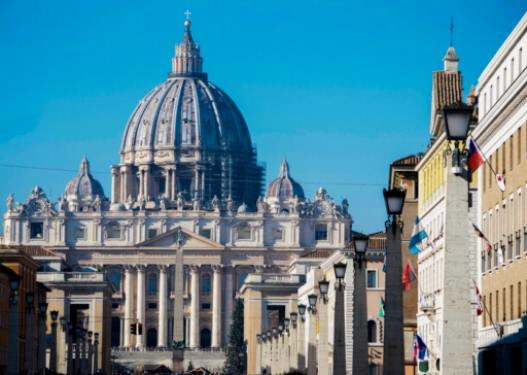Michelangelo's Pietà is a masterpiece of Renaissance art that continues to captivate viewers with its beauty and symbolism. This iconic sculpture has not only undergone restoration and conservation efforts over the years, but has also influenced countless artists and sparked controversies. Let's delve into the rich history and significance of Michelangelo's Pietà.

Symbolism and Iconography in Michelangelo's Pietà
Michelangelo's Pietà is one of the most iconic and revered works of art in the world. Created by Michelangelo in 1499, the sculpture depicts the Virgin Mary cradling the lifeless body of Jesus Christ after his crucifixion. The work is known for its stunning detail, emotional depth, and exquisite beauty.
Symbolism plays a significant role in Michelangelo's Pietà, with each element of the sculpture holding a deeper meaning. The Virgin Mary, with her serene expression and youthful appearance, symbolizes purity, motherhood, and sorrow. Her gentle cradling of Jesus' body reflects her acceptance of his sacrifice and her unwavering faith.
Jesus' body, on the other hand, is depicted with incredible realism and detail, his wounds clearly visible. This symbolizes the physical and emotional toll of his crucifixion, as well as his role as the savior of humanity. The contrast between the delicate, youthful Mary and the strong, suffering Jesus creates a powerful visual representation of their relationship and the central tenets of Christianity.
The positioning of the figures in the sculpture also holds symbolic significance. Mary's calm and composed posture contrasts with the limp and lifeless body of Jesus, emphasizing his sacrifice and her unwavering devotion. The intricate details of the sculpture, such as the folds of Mary's robes and the muscles of Jesus' body, further enhance the emotional impact of the scene.
Overall, Michelangelo's Pietà is a masterpiece of symbolism and iconography, conveying profound emotions and spiritual truths through its meticulously crafted details and powerful composition.
Restoration and Conservation of Michelangelo's Pietà
The restoration and conservation of Michelangelo's Pietà is a complex and ongoing process that aims to preserve this iconic work of art for future generations. Over the years, the Pietà has suffered from damage caused by environmental factors, vandalism, and previous restoration attempts. In 1964, the sculpture was attacked by a mentally disturbed individual who damaged the Virgin Mary's nose, arm, and eyelids. As a result, the Pietà underwent extensive restoration work to repair the damage and stabilize the sculpture.
In recent years, advancements in conservation technology have allowed experts to better understand the materials used by Michelangelo and the effects of aging on the sculpture. Through a combination of scientific analysis, careful cleaning, and stabilization techniques, conservators have been able to halt the deterioration of the Pietà and ensure its longevity. Additionally, ongoing research into the best practices for the conservation of marble sculptures has helped inform the treatment of the Pietà and other works of art by Michelangelo.
Despite the challenges of preserving a masterpiece like the Pietà, the efforts of conservators have been successful in protecting this important work of art. By employing a combination of traditional conservation techniques and cutting-edge technology, experts have been able to maintain the integrity of Michelangelo's masterpiece and ensure that it remains a lasting symbol of beauty and spirituality.
Influence of Michelangelo's Pietà on Renaissance Art
Michelangelo's Pietà continues to be a masterpiece that has greatly influenced Renaissance art. Its depiction of the Virgin Mary holding the body of Christ with a sense of grace and sorrow has been emulated by many artists during the Renaissance period. The emotional intensity conveyed in the sculpture has inspired artists to explore similar themes of grief and spirituality in their own works. Additionally, Michelangelo's mastery of anatomy and his ability to capture the human form in a lifelike manner has been studied and admired by generations of artists, influencing the way in which they approach their own artistic creations. The sheer beauty and power of Michelangelo's Pietà has set a standard for artistic excellence that has continued to resonate throughout the history of art.
Controversies Surrounding Michelangelo's Pietà
Michelangelo's Pietà is undoubtedly one of the most iconic and revered works of art in history. However, it has also been the subject of several controversies throughout the years. One of the most notable controversies surrounding the Pietà is the debate over the identity of the figure of Nicodemus. Some art historians believe that the figure on the left side of the sculpture is actually a self-portrait of Michelangelo, while others argue that it is meant to represent Nicodemus, a biblical figure who helped Joseph of Arimathea bury Jesus. This debate has sparked heated discussions among scholars and art enthusiasts alike.
Another controversy surrounding the Pietà is the issue of its restoration and conservation. Over the years, the sculpture has undergone several restorations, with some critics arguing that these interventions have altered the original vision of Michelangelo. Questions have been raised about whether the restoration process has been faithful to the artist's intent, and whether it has compromised the integrity of the work.
Furthermore, the controversy surrounding the Pietà extends to its display and accessibility to the public. Some critics have argued that the sculpture should be moved to a more secure location, in order to protect it from potential damage or vandalism. However, others believe that the Pietà should remain in its current location, where it can continue to inspire visitors from around the world.
Overall, the controversies surrounding Michelangelo's Pietà highlight the complex and multifaceted nature of this revered work of art. As one of the most significant pieces of Renaissance art, the Pietà continues to inspire debate and discussion among scholars and art enthusiasts alike.
